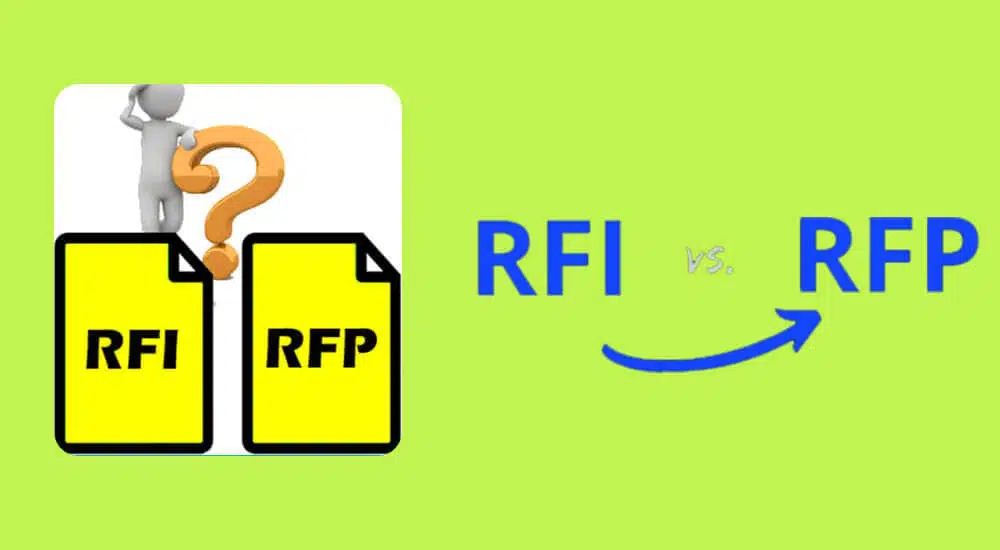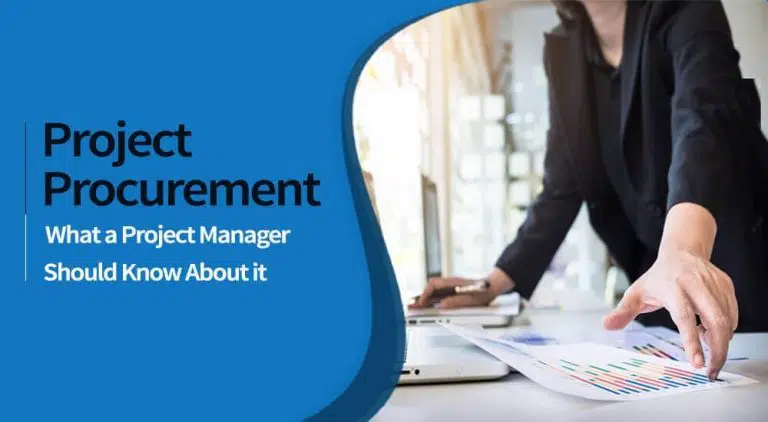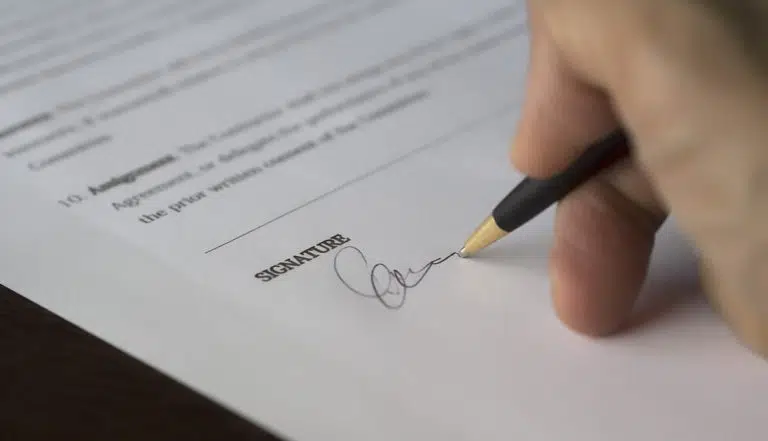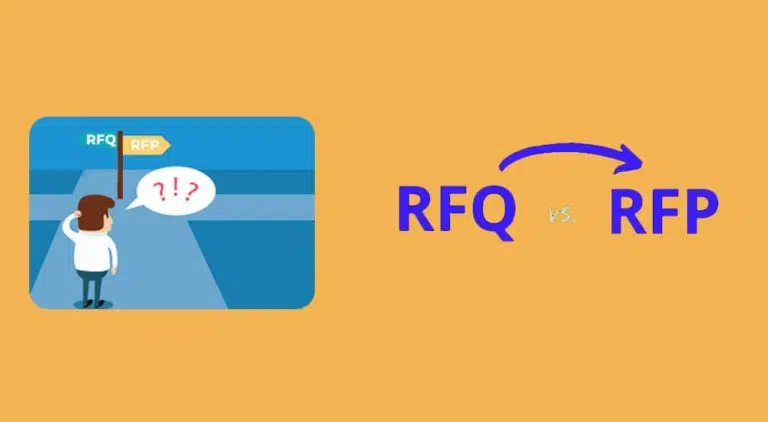In project procurement management, RFI, RFP, and RFQ are key project documents. These documents help communicate project managers with the sellers or contractors.
Today’s article will discuss RFI vs RFP.
Let’s get started.
RFI Vs RFP
We will start with a review of the RFI and then discuss the RFP.
RFI (Request for Information)
An RFI is a communication document that requests information from suppliers about the goods or services to be procured. This may lead to a request for a proposal or a request for a quotation.
An RFI is a bid document to gather more information from the marketplace before issuing an RFQ or RFP. In addition, it helps collect data to develop procurement plans.
For example, suppose an organization lacks the particulars about a consumable or commodity for their construction projects. In that case, they will issue an RFI and ask prospective sellers to submit their responses. This will help the organization plan its budget and get approval.
A seller can provide details on pricing, technical specification, delivery strategy, etc.
An RFI is a non-binding document. Also, submitting a response does not guarantee that the vendor will receive the contract or preferential treatment.
Example of RFI
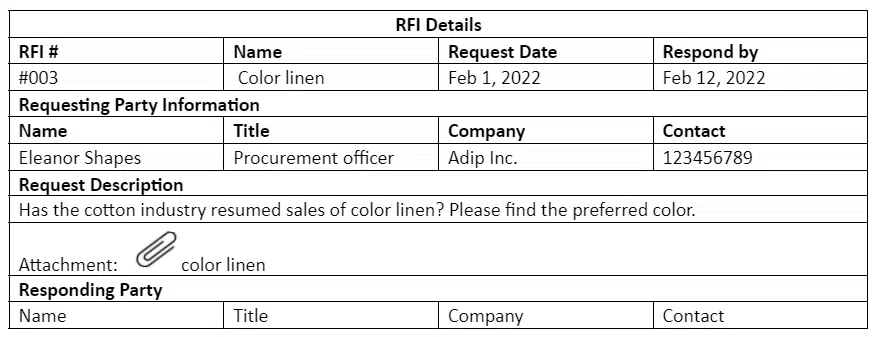
Guideline for Writing an RFI
- Maintain a professional tone
- Be specific
- Provide sufficient context of the situation or ask questions for clarity
- Include images, video, or documents as necessary
- Use a consistent format type and page numbering
- Suggest a solution or possible explanation for the question
- Give adequate time for responses
The purpose of an RFI is information gathering. Hence, the organization issuing the RFI should clarify what information they need.
Through an RFI, the buyer may need the following information:
- Trends of the supply market
- Trends and factors driving change
- Alternative pricing strategies
- The product offerings by a supplier
- And more
RFP (Request for Proposal)
An organization uses an RFP when they have a problem and are looking for a solution. Creativity and innovation are needed to get the award.
The RFP is common with construction projects, consultancy, or services. Usually, an expression of interest is published in newspapers to call interested contractors or consultants for the service.
The buyer may invite a selected list of bidders to submit their RFP response.
Content of RFP
- Name and address of the procurement entity (PE) or the seller
- Preferred language of the proposal (English, Spanish, etc.)
- The manner, place, and deadline for the submission of the proposal
- A statement that the PE reserves the right to reject any proposal
- Criteria and procedures for evaluating the qualifications of the consultants
- Qualifications of consultants with documentary evidence
- Nature of services, including location and time when they can provide them
- Preferred currency of the proposal (USD, Pound, Euro, etc.)
- Statement on whether the price consists of logistics, insurance, duties, and tax
- The basis for selecting a successful proposal could be the lowest cost, greatest quality, or combination.
An RFP can be a part of procurement contracts such as fixed price, cost reimbursable, or time & materials.
In most cases, the award is given to the lowest price bidder if they fulfill the technical requirements specified in the RFP.
Similarities Between RFI and RFP
- They are both bid documents.
- They are outward correspondence-from seller to vendors.
Differences Between RFI and RFP

Frequently Asked Questions (FAQs)
FAQ-1: RFI comes first or RFP?
RFI comes first. Buyers get information through the RFI, create the RFP, and float it to the open market to get competitive offers.
FAQ-1: Can the RFI and RFP be used interchangeably?
No, the RFI is for gathering simple commodity information. In contrast, the RFP is a bid document sent to the public to obtain a detailed solution with pricing.
FAQ-2: What is the relevance of an RFI and RFP to a project manager?
They formalize written communication between the procurement manager and external parties such as vendors and contractors.
FAQ-3: Why is the RFP always so many pages, unlike the RFI?
When we use an RFP, we have a problem when the scope of work or solution is unclear, and we rely on contractors’ submissions. Hence, we describe the situation and requirements to ensure contractors understand it.
On the other hand, we are only seeking clarification for an RFI; therefore, it should be concise.
Summary
The RFI and RFP are procurement documents. They are different and serve different purposes. An RFI helps an organization get details on commodities, while an RFP lets bidders submit detailed solutions to the organization’s problems.
This is where this post on RFI vs RFP ends.
Are you involved with creating an RFP or RFI? If so, please share your experience through the comments section.
References
- https://en.wikipedia.org/wiki/Request_for_information
- https://www.pmi.org/learning/library/project-requirements-rfps-vendor-proposals-6673
- https://www.bpp.gov.ng/wp-content/uploads/2019/01/Public-Procurement-Act-2007pdf.pdf
- PMBOK Guide, Project Management Institute, Seventh edition, pg. 74-75
- https://www.negotiations.com/articles/procurement-terms/
- https://constructioncoverage.com/glossary/request-for-information
- https://en.wikipedia.org/wiki/Request_for_proposal

I am Mohammad Fahad Usmani, B.E. PMP, PMI-RMP. I have been blogging on project management topics since 2011. To date, thousands of professionals have passed the PMP exam using my resources.

